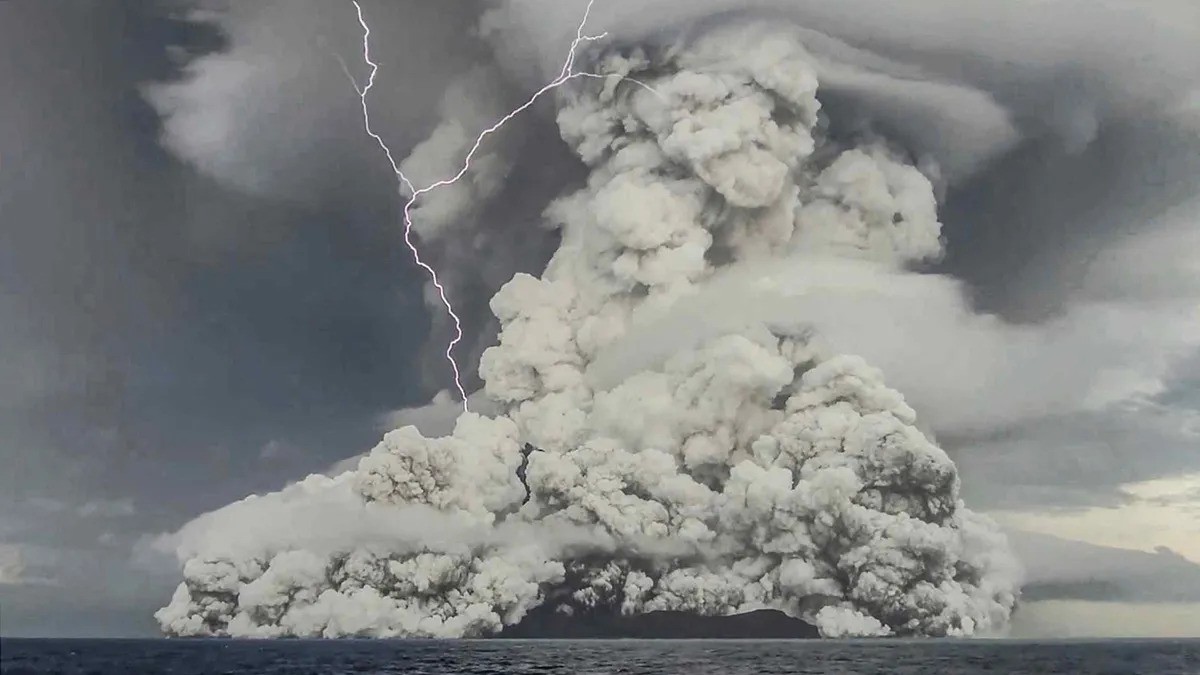Scientists have used satellite images to study what is happening with the Hunga volcano. Its eruption became one of the most notable events of 2022. They have mapped the cavities beneath it, which are filled with magma.

Eruption of Hunga volcano
Researchers have figured out what is happening under the Hunga Tonga-Hunga Ha’apai volcano, which is briefly called Hunga. In January 2022, its eruption became almost the most notable event on Earth. It was even watched from space at that time.
The ash from the Hunga eruption then reached a height of 57 km, and the tsunami from it reached the coasts of Japan and the United States. It is known that most of the volcano’s cones were destroyed by the explosion, but the scale of the destruction is difficult to determine even now since everything is underwater.
It is all the more difficult to create a map of the underground chambers that are located under the volcano. It is extremely difficult to use ground-penetrating radars and other familiar equipment underwater. However, scientists have still managed to figure out what is happening there now. The satellites helped them with this.
Chambers filled with magma
In order to create a map of the magma under the volcano, scientists used radar satellite data. They are sensitive enough to notice a tiny difference in the water level in the ocean. When these data were combined with bathymetry, i.e., information about the topography of the seabed, the researchers were able to make a map of gravitational anomalies.
And they have already suggested whether there are any cavities under the caldera, that is, the destroyed cone of the Hunga volcano. It turned out that it mainly fed on magma from the central chamber. As a result of the eruption, it was emptied by 30 percent.
However, there are three more pockets of magma under the Hunga volcano. In one of them, it cools and solidifies, but in the other two, it remains liquid. They are connected to each other and to the central cavity, so over time the latter will be replenished with fresh molten stone and a new explosion may occur.
According to phys.org
Follow us on Twitter to get the most interesting space news in time
https://twitter.com/ust_magazine


